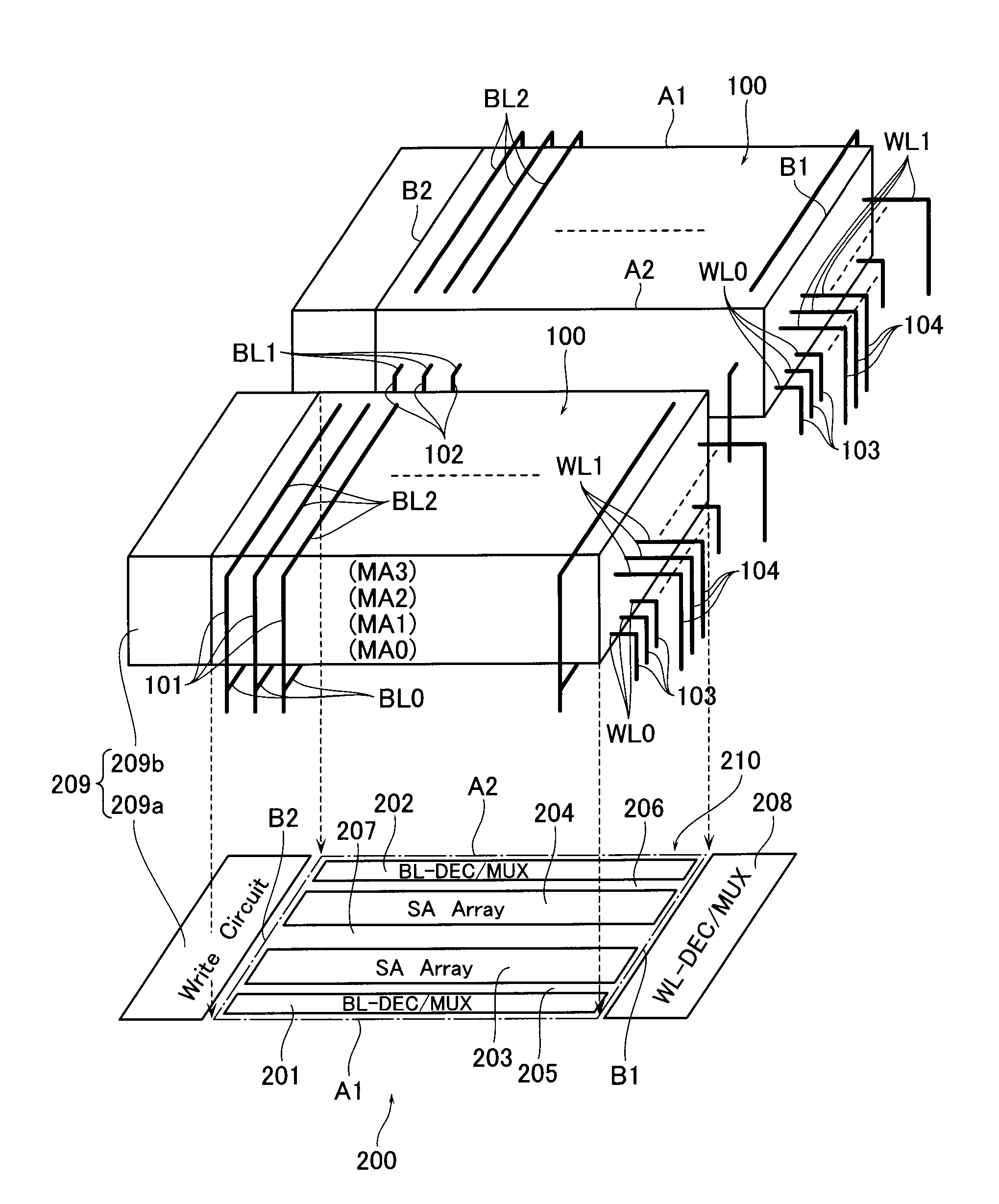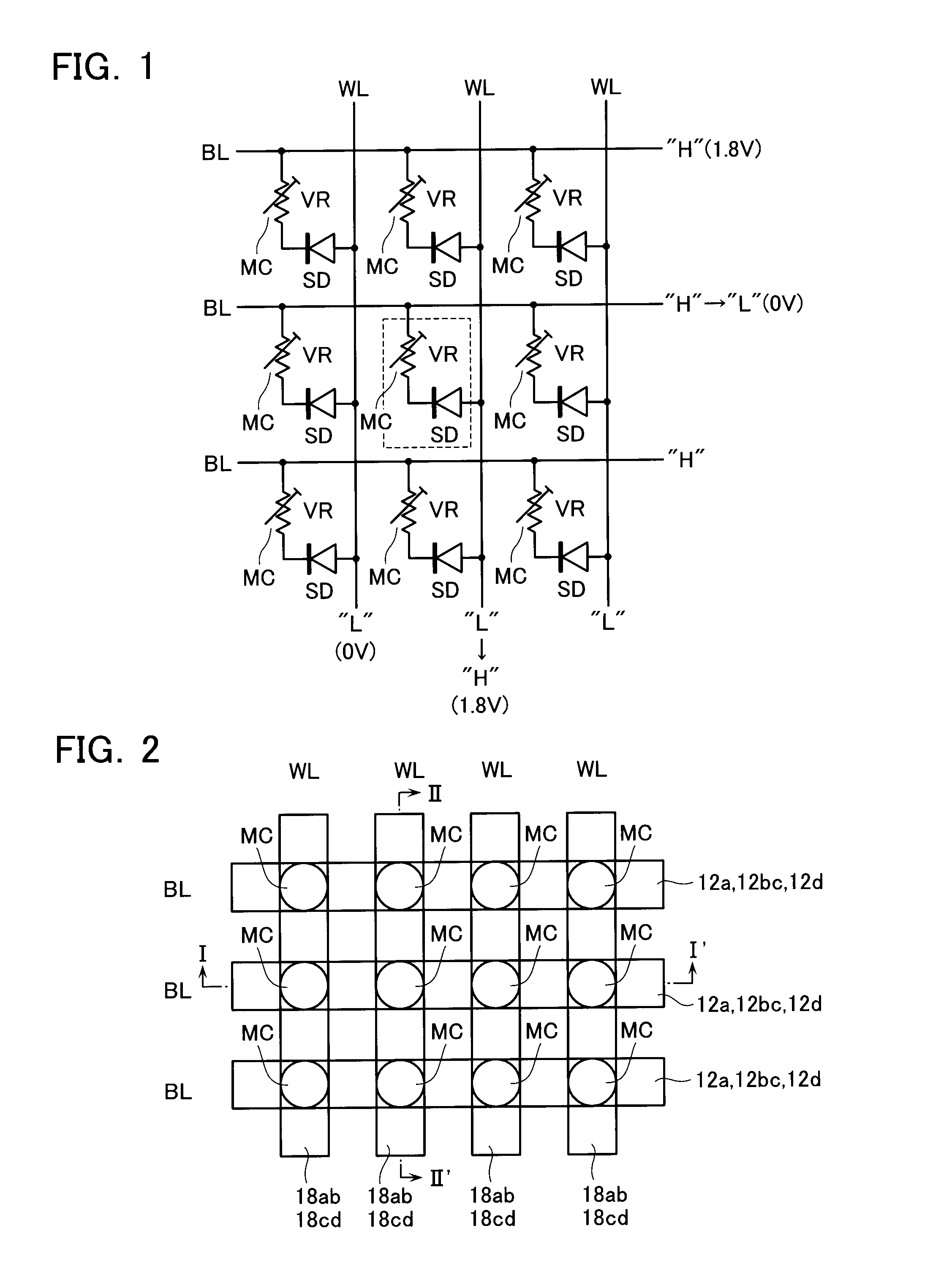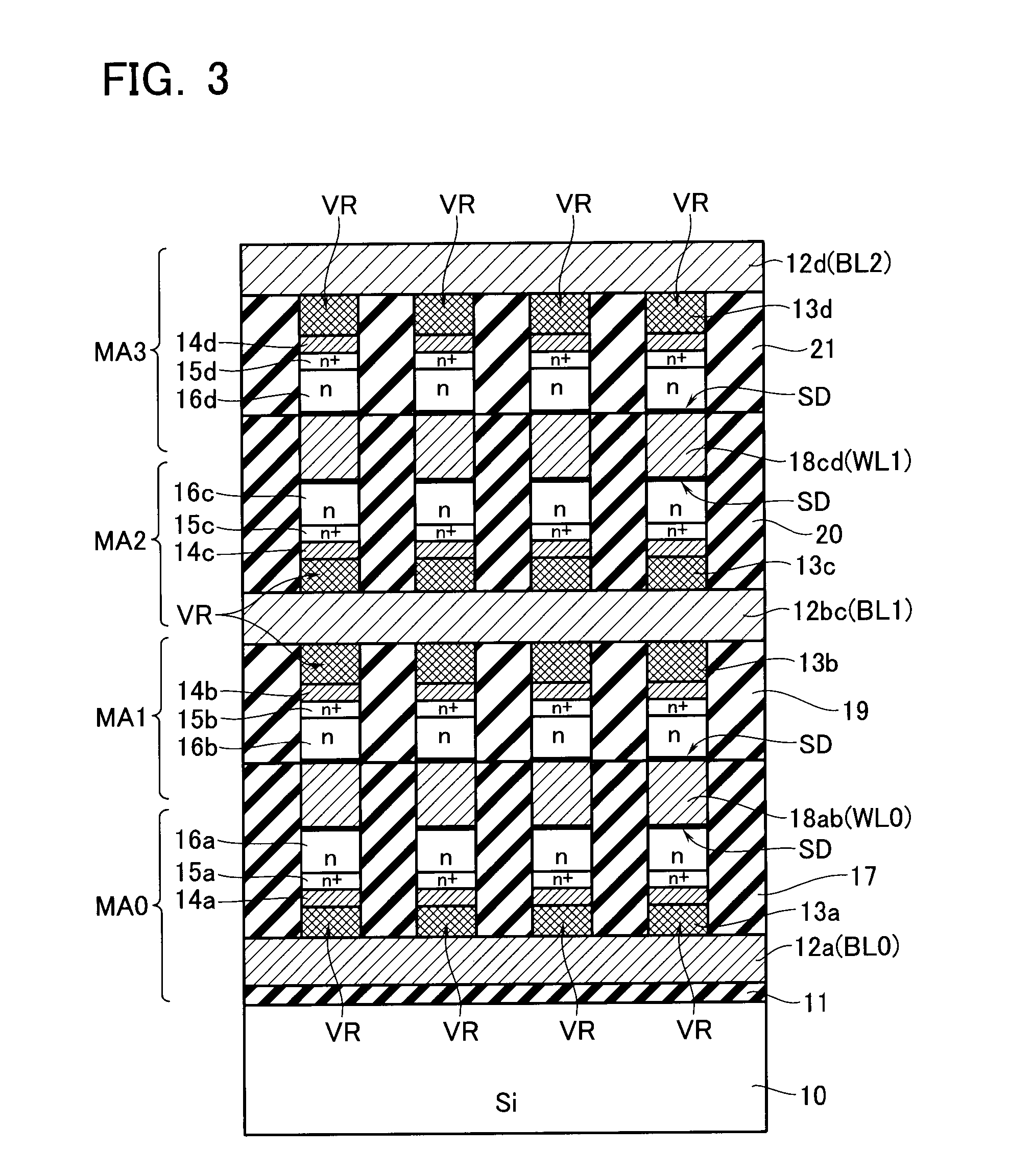Resistance change memory device
a memory device and resistance change technology, applied in the field of resistance change memory devices, can solve the problems of not easy to further carry forward the miniaturization, not easy to access the plural cell array at a time, and difficult to read/write circuits
- Summary
- Abstract
- Description
- Claims
- Application Information
AI Technical Summary
Benefits of technology
Problems solved by technology
Method used
Image
Examples
Embodiment Construction
[0045]Referring to the drawings, embodiments of this invention will be described bellow.
[0046]FIG. 1 shows a cell array of a phase change memory in accordance with an embodiment, with respect to a 3×3 cell matrix. A plurality of word lines WL are provided in parallel, and a plurality of bit lines BL are provided to cross the word lines WL.
[0047]Memory cells MC are laid out at the respective crossing points of these lines. The memory cell MC is a series-connection circuit of a variable resistive element VR and a diode SD. The variable resistive element VR is formed of chalcogenide and is operable to store therein a resistance value determined due to a phase transition between its crystalline and amorphous states as a binary data in a nonvolatile manner.
[0048]Although the diode SD is a Schottky diode in a preferable case of this embodiment, a PN-junction diode is alternatively usable. One end of the memory cell MC is connected to a bit line BL, and the other end is connected to a word...
PUM
 Login to View More
Login to View More Abstract
Description
Claims
Application Information
 Login to View More
Login to View More - R&D
- Intellectual Property
- Life Sciences
- Materials
- Tech Scout
- Unparalleled Data Quality
- Higher Quality Content
- 60% Fewer Hallucinations
Browse by: Latest US Patents, China's latest patents, Technical Efficacy Thesaurus, Application Domain, Technology Topic, Popular Technical Reports.
© 2025 PatSnap. All rights reserved.Legal|Privacy policy|Modern Slavery Act Transparency Statement|Sitemap|About US| Contact US: help@patsnap.com



